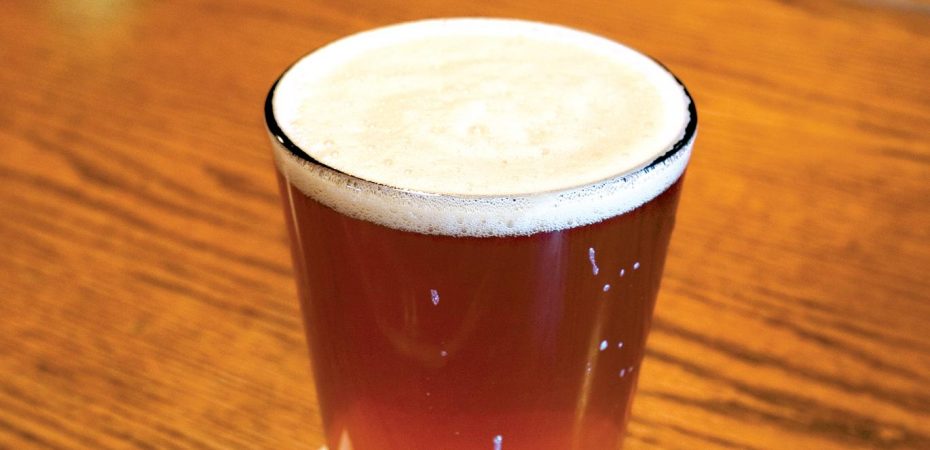Approaching beer from a background in poncey wine writing, I find most beer labels about as easy to crack as the enigma code.
Do I want a beer that’s ‘hoppy’ or ‘malty,’ or should I really push the boat out and go for one that’s ‘hoppy and malty,’ preferably ‘traditionally brewed’?
Scratching my head in my local offie the other day, I really couldn’t decide – until I found a bottle of Adnams Broadside describing itself as “rich in fruitcake aromas, almonds and conserved fruit.” Is it a coincidence that Suffolk-based Adnams is both a brewer and a wine merchant? I’ll let you decide.
The wine market has boomed since the mid-1980s when New World wineries, notably the Australians, began sticking grape varieties and tasting notes on their labels. Through simple communication consumers developed an interest in what they were drinking and gained sufficient confidence to experiment. But New World wines aren’t new any more and the beer market is changing. Yes, it’s still dominated by the bland and the mainstream but there’s never been such a choice of specialist beers, and their trump card is taste.
Wheat beers are vying with fruit beers; dark lagers and imported bottled lagers are competing with premium British bottled beers; American pale ales and craft beers are beginning to kick butt. And many of these beers, being of higher alcoholic strength, are encroaching into wine’s wind-down after-work territory where they are served in wine-style glasses and sipped, slightly chilled, as opposed to being chucked, frozen, down necks.
These are beers not just to be drunk, but tasted. Consequently, beer writing is blossoming, despite the fact that most brewers are withholding the ammunition – a sensible language of beer.
My fact-finding mission down the offie convinced me of one thing; that premium British bottled beers are leading the charge in the war of words. To pick just one example, with its provocative slogan – “What’s the matter, Lagerboy, afraid you might taste something?” – at least Wychwood’s Hobgoblin puts its words where its mouth is. Its Legendary Ruby Beer label describes a “blend of smooth, rich flavours from chocolate and crystal malts, combined with a refreshing bitterness from English Fuggles hops and a dash of citrus aroma from Styrian Goldings.” Yes, it bangs on about malt and hops – what else is there for beer to bang on about, other than yeast and water? – but it goes that one vital step further and explains in plain English the flavours these ingredients bring to the brew.
Beer’s ‘problem’ is that malt and hops are so very dominant in its flavour profile, yet ‘malty’ and ‘hoppy’ as flavour descriptors mean bugger all to the casual beer drinker. Wine, in contrast, has such upfront fruit flavours that a wine writer’s task is merely to point out what Basil Fawlty called “the bleedin’ obvious.”
Jim Helsby, who owns The Yorkshire Beer & Wine Shop and writes a beer column in his local paper, argues that the language of beer is still in its infancy and bravely admits that he sometimes gets a bit stuck after malty, hoppy, fruity and dry. But, he insists, it is the beer writer’s job to delve deeper, to ask what do we mean by malt flavour and hop flavour? After all, malt and hops are the ‘grapes’ of beer. “There’s no doubt the fruit flavours are there,” he says. “But compared to the dominant flavours of malt and hops they can be quite whimsical and fleeting. I often get black cherry, peach, apricot and banana but you have to work at it; it takes a bit of practice.”
David Bremner, the brains behind the Cyclops beer-tasting format (more of which later) says: “It’s because the spectrum of taste is narrower. The first thing you get is bitter, you then have to find the flavours within this.”
For Rupert Ponsonby of the Beer Academy the answer lies in being more specific about the flavours. There are so many different malt and hop varieties and different degrees of roasting of the malt that it’s sheer laziness to describe a beer as ‘malty’ or ‘hoppy.’
So, rather than ‘malty’ how about words like ‘caramel,’ ‘honey,’ ‘treacle,’ ‘molasses,’ ‘chocolate,’ ‘coffee’ and ‘liquorice’? There’s a few to be getting on with.
Article continues in Beers of the World Magazine Issue 18

